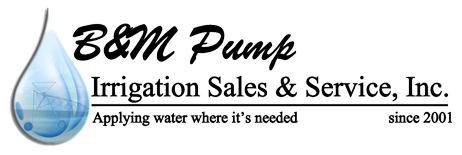Winter Tips for Wheat Irrigation
For growing winter wheat, there’s a specific rate, amount and timing of irrigation necessary to generate a healthy crop. Winter wheat irrigation is particularly tricky when taking into account the variable climate of Texas. Spring last year was too wet and caused sprouting and damage issues.
To find out more about winter wheat water requirements, read on.
Winter wheat requirements
Winter wheat utilizes water to facilitate evapotranspiration. The needs of the crop depend on the growth stage, density, canopy, climatic conditions and crop management. A well-irrigated seed that’s free of pests in optimal conditions will thrive.
At peak water use, winter wheat will require 1.5 mm to 2 mm per day in October before cold weather sets in. When the crop comes out of dormancy in the spring, it will use a wide range of water (from 0.1 mm to 7 mm) as it goes through the flowering and fruit stages.
The total seasonal requirement is typically 18 inches to 21 inches; however, various factors like weather conditions, stored moisture and the efficiency of water applied will all affect the amount of irrigation water used.
Overirrigation
The tricky part is that just a few additional inches of water will have a negative impact on the crop. When too much water is applied, leaching will then occur. About 10 percent overirrigation or relying on off-season rainfall is enough for leaching salts, which are part of the water. Excess water will deliver plant nutrients, like nitrogen, outside of the rooting and feeding areas of the plant. It may also be wasteful to irrigate too much in the early season before the plant utilizes nitrogen.
Last year, Texas saw heavy amounts of rain, with 7 or 8 inches falling in a short period of time. This caused the seed quality and grain quality to deteriorate. The crop went from being high-quality, human-consumable grade to being feed grain. While it’s difficult to predict the weather for the whole season, avoiding overirrigation is key to having a bumper crop.
Winter wheat water usage patterns
Winter wheat irrigation should reflect when the plants need water the most. For example, by the time spring arrives, the rooting system has become more efficient at water usage. Once summer hits, most of the wheat crop has headed and its need for water diminishes rapidly.
Once winter wheat is planted, the fact is that there’s plenty of work that still needs to be done. From managing irrigation to fighting against diseases and weeds, wheat producers will have plenty on their plates. Variable weather conditions won’t make things any easier in determining exactly how to plan for the coming months.
Do you need assistance in determining winter wheat water requirements? Fortunately, the pros at B&M Pump Irrigation Sales & Service, Inc. are complete irrigation specialists who serve the greater Southwest. We do it all—from well and pump service to irrigation system design, pivot systems and more. For high-quality irrigation systems that will deliver the crops you’re looking for, give us a call today.
Categorised in: Irrigation
